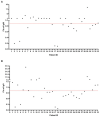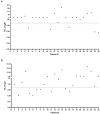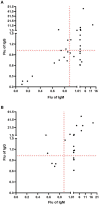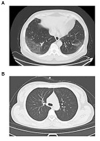Clinical Significance of an IgM and IgG Test for Diagnosis of Highly Suspected COVID-19
- PMID: 33912572
- PMCID: PMC8071939
- DOI: 10.3389/fmed.2021.569266
Clinical Significance of an IgM and IgG Test for Diagnosis of Highly Suspected COVID-19
Abstract
Background: Nucleic acid detection and CT scanning have been reported in COVID-19 diagnosis. Here, we aimed to investigate the clinical significance of IgM and IgG testing for the diagnosis of highly suspected COVID-19. Methods: A total of 63 patients with suspected COVID-19 were observed, 57 of whom were enrolled (24 males and 33 females). The selection was based on the diagnosis and treatment protocol for COVID-19 (trial Sixth Edition) released by the National Health Commission of the People's Republic of China. Patients were divided into positive and negative groups according to the first nucleic acid results from pharyngeal swab tests. Routine blood tests were detected on the second day after each patient was hospitalized. The remaining serum samples were used for detection of novel coronavirus-specific IgM/IgG antibodies. Results: The rate of COVID-19 nucleic acid positivity was 42.10%. The positive detection rates with a combination of IgM and IgG testing for patients with COVID-19 negative and positive nucleic acid test results were 72.73 and 87.50%, respectively. Conclusions: We report a rapid, simple, and accurate detection method for patients with suspected COVID-19 and for on-site screening for close contacts within the population. IgM and IgG antibody detection can identify COVID-19 after a negative nucleic acid test. Diagnostic accuracy of COVID-19 might be improved by nucleic acid testing in patients with a history of epidemic disease or with clinical symptoms, as well as CT scans when necessary, and serum-specific IgM and IgG antibody testing after the window period.
Keywords: COVID-19; CT scan; IgG; IgM; nucleic acid test.
Copyright © 2021 Jia, Zhang, Tian, Wang, Zeng, Wang, Liu, Chen, Zhang, He, He and Liu.
Conflict of interest statement
The authors declare that the research was conducted in the absence of any commercial or financial relationships that could be constructed as a potential conflict of interest.
Figures






References
LinkOut - more resources
Full Text Sources
Other Literature Sources

